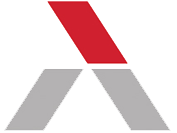In recent years, direct-to-consumer (DTC) pharmacies have grown in popularity by offering patients lower prices for common, generic medications. However, a new study published in the Journal of General Internal Medicine found that these pharmacies still have their shortfalls, with many not offering the most expensive generic drugs.
Study details and key findings
For the study, researchers examined the availability and pricing of 100 of the most expensive generic drugs and 50 of the most commonly used generic drugs at five national DTC pharmacies: Amazon, Costco, Mark Cuban Cost Plus Drugs (MCCPD), Health Warehouse, and Walmart.
The researchers determined the most expensive and most common generic drugs by analyzing Medicare Part D data from 2020. Pricing information for all drugs was taken from the companies' websites and compared to retail pricing data from GoodRx.
Overall, the researchers found that almost 20% of the most expensive generic drugs, which included treatments for HIV, cancer, or multiple sclerosis, were not available at any of the five DTC pharmacies. In comparison, almost all (98%) of the most common generic drugs were available at the DTC pharmacies.
"For the more expensive specialty generic drugs, where patients probably stand to benefit the most, it's far more variable in terms of whether they're available," said Benjamin Rome, a faculty member at the Program on Regulation, Therapeutics, and Law at Harvard Medical School and Brigham and Women's Hospital and one of the study's authors.
There was also significant variation in price for both the most expensive and the most common generic drugs.
For the 88 expensive generics that were available, 47% were the least expensive at Amazon, 26% at MCCPD, 14% at Health Warehouse, and 13% at Costco. For the most common generics, 31% were the least expensive at Costco, 27% at Amazon, 20% at Walmart, 12% at Health Warehouse, and 10% at MCCPD.
The median cost savings for expensive generics was 76%, or $231. Common generics also had a comparable median cost savings of 75%, but it was equivalent to a much smaller $19 difference.
Commentary
According to Advisory Board's Chloe Bakst, the study's findings are not surprising, but they do offer "a better understanding of the moment we're in for the DTC cash pay pharmacy market."
DTC pharmacies may not always have all the medications a patient needs or the lowest prices, but "that doesn't mean they don't serve a valuable function for consumers, especially those who invest the time to price shop and compare costs across multiple DTC cash pay and traditional retail pharmacy options," Bakst said.
"Right now, consumers have many choices and have to carefully weigh the pros and cons of the different offerings against their traditional PBM benefits," she said. "Ultimately, this will come down to each individual patient's goals and preferences for convenience vs. savings."
Bakst also noted that the Inflation Reduction Act will likely have a ripple effect on the cash pay pharmacy market. Starting in 2025, Medicare Part D will have a maximum out-of-pocket spending cap of $2,000, and some patients may find that they're able to save more money by quickly hitting the cap on their Part D benefits vs. finding the best cash pay option.
Separately, Rome said that pricing variability at DTC pharmacies may end up being a "big barrier" to consumers who are hoping to find cheaper generic drugs easily.
"You have to shop around, find the best price, get your doctor to send the prescription to the right pharmacy, and then the next month, the prices might change, and you have to shop around again," he said. "That's a ton of work that I don't think consumers are ready for or equipped to handle. It also creates equity concerns for patients who are vulnerable and don't have the resources or knowledge to do that sort of shopping."
Going forward, the study's authors called for traditional retail pharmacies to be more transparent about their prices and for better tools to help both patients and prescribers understand the true costs of medications.
"The complexity of the current retail pharmacy and [pharmacy benefit manager] PBM space is at fault here," Rome said. "We want this to be a streamlined process so that no matter where you want to fill the medicine, you should be getting competitive pricing."
We need to fix "the existing system to make sure that the prices that patients are paying are real competitive prices, not inflated prices that are being skimmed off the top through multiple parts of the supply chain like the pharmacy benefits managers," he added. (Silverman, STAT+ [subscription required], 3/1; Fiore, MedPage Today, 2/7)
As prescription drug spend rises, more cash-pay pharmacies are opening to sell generic medications outside of insurance. Read our expert insight to find out why cash-pay pharmacies are a symptom of — not a solution to — our current prescription drug system.
Don't miss out on the latest Advisory Board insights
Create your free account to access 1 resource, including the latest research and webinars.
Want access without creating an account?
You have 1 free members-only resource remaining this month.
1 free members-only resources remaining
1 free members-only resources remaining
You've reached your limit of free insights
Become a member to access all of Advisory Board's resources, events, and experts
Never miss out on the latest innovative health care content tailored to you.
Benefits include:
You've reached your limit of free insights
Become a member to access all of Advisory Board's resources, events, and experts
Never miss out on the latest innovative health care content tailored to you.
Benefits include:
This content is available through your Curated Research partnership with Advisory Board. Click on ‘view this resource’ to read the full piece
Email ask@advisory.com to learn more
Click on ‘Become a Member’ to learn about the benefits of a Full-Access partnership with Advisory Board
Never miss out on the latest innovative health care content tailored to you.
Benefits Include:
This is for members only. Learn more.
Click on ‘Become a Member’ to learn about the benefits of a Full-Access partnership with Advisory Board
Never miss out on the latest innovative health care content tailored to you.


